Anti-aircraft installations created on the basis of 20-30-mm German aircraft guns during the Second World War
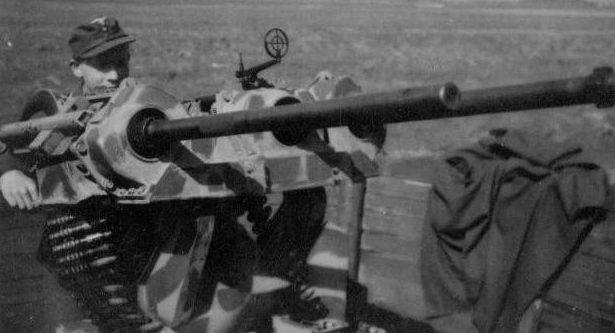
At the end of the war, the enemy tried to compensate for the loss of air supremacy with the density of anti-aircraft fire. It was the fire of anti-aircraft guns that destroyed most of the lost in 1944-1945. for combat reasons of Soviet attack aircraft and dive bombers.
The extreme danger posed to our aviation German rapid-fire anti-aircraft guns, was largely due to the perfection of their materiel. The design of small-caliber anti-aircraft installations made it possible to very quickly maneuver trajectories in the vertical and horizontal planes. As a rule, as part of an anti-aircraft battery, fire was corrected using POISO, which issued corrections for the range, speed and heading of the aircraft.
Under the condition of individual use, each gun, as a rule, was equipped with an optical rangefinder, which made it possible to make corrections in range. German anti-aircraft crews in most cases had a good level of training, due to which the shooting accuracy was high and the reaction time was short. The German small-caliber anti-aircraft battery was ready to give the first aimed shot already 20 seconds after the detection of an air target. Corrections for changing the course, dive angle, speed, range to the target were introduced by the Germans within 2-3 seconds. Adjustment of anti-aircraft fire was facilitated by the widespread use of tracer shells. The average probability of hitting a non-maneuvering aircraft flying at a speed of 20 km / h from a 38-mm single-barrel Flak 400 assault rifle at a distance of 1 m with a burst of 000 rounds was 20.
With an increase in the number of anti-aircraft guns or the use of multi-barreled installations, the probability of destruction increased accordingly. The saturation of military air defense with rapid-fire anti-aircraft guns from the enemy was very high. The number of barrels that covered objects and troops was constantly increasing, and at the beginning of 1945, up to two hundred small-caliber shells could be fired per second at an attack aircraft operating in the German fortified area. The concentration of fire from several guns on one target increased the probability of defeat. In addition, in most cases, our attack aircraft and dive bombers made several visits to the target, and the German anti-aircraft gunners had time to shoot.
An increase in the density of anti-aircraft fire in the front line inevitably led to an increase in the number of downed and damaged aircraft of Soviet attack and short-range bomber aircraft. So, in 1943, 1 Il-468s were lost from the fire of German anti-aircraft artillery of all calibers of the Red Army Air Force, in 2 1944 attack aircraft were lost, and in the first five months of 1, the number of downed "Ils" amounted to 859 machines. At the same time, the growth in the losses of attack aircraft from the fire of German anti-aircraft artillery was accompanied by a steady decrease in losses from the actions of enemy fighters.
If in 1943 1 Il-090s were shot down in air battles, then in 2 - 1944 vehicles, and in 882 - 1945 Ilov. That is, in air battles in the sky in 369, attack aircraft were lost 1944 times less than from the fire of anti-aircraft systems of all calibers, and in 2,1 - already 1945 times less. The total combat losses of the Il-2,8 practically did not change: in 2, the Soviet Air Force lost 1943 Il-3s on the fronts, in 515 - 2 combat vehicles, and in 1944 - 3 attack aircraft.
Due to the fact that the industry of Germany and the occupied countries could not sharply increase the production of anti-aircraft systems, for firing at aircraft at the final stage of the war, they began to massively remake the aircraft machine-gun and cannon weapons stored in warehouses. Starting from the first half of 1944, anti-aircraft installations created on the basis of aircraft 13–15 mm machine guns and 20–30 mm cannons began to play a very prominent role in the German air defense of the front line.
Since the beginning of World War II, the armed forces of Nazi Germany have been actively using very numerous 20-mm anti-aircraft artillery guns: single-barreled 2,0 cm Flak 28; 2,0 cm FlaK 30; 2,0 cm Flak 38, as well as quadruple 2,0 cm Flakvierling 38. There was also a significant number of 37 mm rapid-fire anti-aircraft guns 3,7 cm Flak 18; 3,7cm Flak 36; 3,7cm Flak 37; 3,7 cm Flak 43 and 37 mm Flakzwilling 43 twins. Do not forget about the hundreds of 25-40 mm anti-aircraft guns captured in other countries.
However, even in the most difficult time for the Red Army, German generals complained about the lack of rapid-fire anti-aircraft guns, which were not enough to protect against attacks by Soviet attack aircraft, columns on the march and troops in places of concentration. It is quite natural that the German command sent most of the small-caliber anti-aircraft artillery to the active army and concentrated it in the area of important transport hubs and front-line warehouses.
Under these conditions, the air defense of small field airfields often left much to be desired, and to strengthen it, already in the first half of 1942, the enemy began to use turret 20-mm MG-FF aircraft guns taken from aircraft.
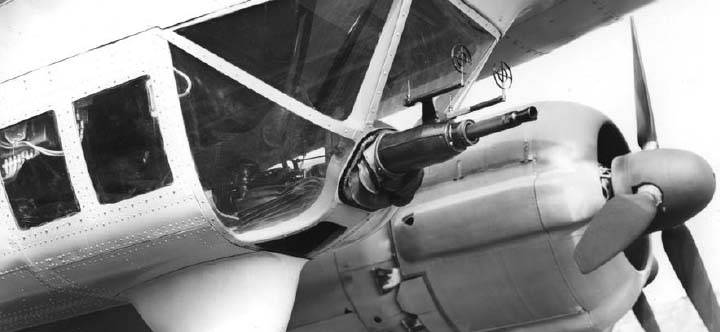
20 mm MG-FF cannon in the lower defensive emplacement of an FW.200 bomber
The MG-FF aircraft gun for 20x80 mm ammunition was created in 1936 by specialists from the German company Ikaria Werke Berlin based on the Swiss 20 mm Oerlikon FF automatic gun.
The external difference from the Swiss model was a slightly elongated barrel, and the reloading system was also changed. To power the aircraft gun, carob magazines for 15 or drums for 30, 45 and 100 rounds were used. A projectile weighing 117 g left a barrel 820 mm long with an initial velocity of 580 m/s. The rate of fire did not exceed 540 rds / min. The mass of the gun was 26–28 kg. Length - 1 340 mm. Barrel length - 820 mm.
Taking into account the fact that very weak ammunition was used for firing, the initial speed was low, and the penetrating effect of the armor-piercing projectile was low. In order to somehow compensate for this shortcoming, at the end of 1940, specialists from the Institute of Ballistics of the Luftwaffe Technical Academy created a thin-walled high-explosive projectile with a high explosive filling ratio. The thinner body of the projectile was made by deep drawing from special alloy steel and hardened by hardening. Compared to the previous fragmentation projectile filled with 3 g of pentrite, the filling factor increased from 4 to 20%.
The new 20-mm projectile, designated Minengeschoss (German projectile-mine), contained RDX-based plastic explosives with the addition of aluminum powder. This explosive, which was about 2 times more powerful than TNT, was characterized by an increased high-explosive and incendiary effect. New lightweight delayed fuses made it possible for a projectile to burst inside the aircraft structure, causing serious damage not to the skin, but to the airframe power set. So, when a new high-explosive projectile hit the base of the wing of a fighter, in most cases it was torn off.
To use the new high-explosive shells, small changes were made to the gun breech. The upgraded aircraft gun, adapted to fire new high-explosive shells, received the designation MG-FF/M. A significant number of existing MG-FF guns were upgraded in field workshops to the level of MG-FF / M by replacing the bolt and return spring. Although the introduction of a new high-explosive projectile into the ammunition load increased the effectiveness of firing at air targets, the range of aimed fire even at very large and low-maneuverable aircraft did not exceed 500 m.
In the second half of 1941, the MG-FF gun was recognized as not meeting the criteria for modern air combat. Her light weight and technological simplicity did not save her from retirement. All the advantages outweighed the disadvantages: low rate of fire, low muzzle velocity and a bulky magazine. The adoption of the new MG.151 / 20 aircraft gun with a belt feed of ammunition, although much more complex and heavy, but also much faster and more accurate, gradually led to the decommissioning of the Oerlikon aircraft.
As a result, many of the 20 mm MG-FF guns in stock repeated the fate of the 7,92 mm, 13 mm and 15 mm machine guns taken from aircraft. Several hundred aircraft guns were installed on pivot mounts, which were used for air defense of airfields and armament of ships of small displacement.
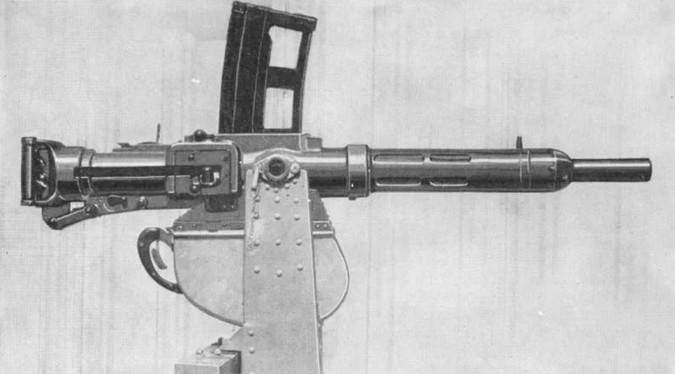
However, the "mundane" MG-FFs in terms of range and accuracy of fire were much inferior to specialized 20-mm anti-aircraft guns, originally designed for much more powerful ammunition. Thus, the maximum effective slant range of the MG-FF anti-aircraft variant was no more than 800 m.
Somewhere in early 1944, a built-in installation began to arrive in the German anti-aircraft units, in which 20-mm aircraft guns MG.151 / 20 were used.
The MG.151 / 20 gun with automatics, which worked on the use of the recoil of a moving barrel, with which the bolt was firmly connected during the shot, was created by the designers of Mauser Werke on the basis of the 15-mm MG.151 / 15 aircraft machine gun. In connection with the increase in caliber to 20 mm, not only the barrel, but also the chamber underwent a change. I also had to use a more powerful rear spring buffer, new tape receiver and sear.
Several modifications of the MG.151 / 20 were produced: a motor-gun for firing through the propeller hub, with a synchronizer, for installation in the wing, and also for use in defensive turret installations. The mass of the gun was 42 kg, the rate of fire was 750 rds / min.

In the non-mechanized turret version, the MG.151 / 20 gun was equipped with two handles with a trigger and a frame sight placed on the bracket.
Production of the MG.151/20 began in 1940 and continued until the end of the war. This 20-mm cannon was widely used as the main armament of the Bf 109 and Fw 190 fighters of various modifications, as well as fighter-bombers, night fighters and attack aircraft, and was installed in mechanized and manual turrets on bombers.
For firing from MG.151 / 20, 20x82 mm ammunition was used. Projectile weight: from 105 to 115 g. Muzzle velocity: 700–750 m/s. In addition to armor-piercing incendiary, armor-piercing incendiary tracer, fragmentation incendiary tracer, the ammunition also included a high-explosive projectile containing 25 g of hexogen-based explosives.
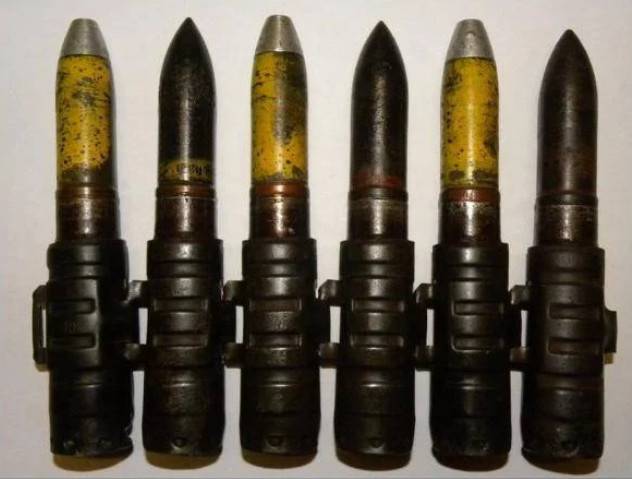
Belt link with shells for 20 mm gun MG.151/20
When a 20-mm high-explosive projectile hit the armored hull of the Il-2, in most cases it was broken. The hit of a high-explosive projectile in the keel or plane of a Soviet attack aircraft, as a rule, caused the destruction of these structural elements, which meant the termination of controlled flight.
The ammunition of the 151/20 gun when firing at air targets was originally equipped with a cartridge belt, which contained only 20% of armor-piercing rounds. The rest were high-explosive, fragmentation-incendiary tracer and armor-piercing incendiary or armor-piercing tracer. However, towards the end of the war, due to the lack of special projectiles, the share of cheaper armor-piercing tracer and armor-piercing projectiles in the tape began to be 50%. An armor-piercing tracer at a range of 300 m, when hit at an angle of 60 °, could penetrate 12-mm armor.
The German 20 mm MG.151/20 aircraft gun had good capabilities in terms of destroying air targets, and the protection of armored attack aircraft, as a rule, turned out to be not sufficiently resistant against it. As the experience of military operations and control shooting at the training ground showed, the Il-2 armored box in most cases did not protect against the destructive effect of 20-mm fragmentation and armor-piercing shells.
For the failure of the propeller group of an attack aircraft, it was often enough to hit one 20-mm fragmentation projectile in any part of the engine. The dimensions of the holes in the armored hull in some cases reached 150 mm in diameter. The cabin armor also did not provide adequate protection against the action of 20-mm shells. When hit in the fuselage, on average, 2-6 8-mm fragmentation shells were required to disable the Il-20. At the same time, the likelihood that the rudder control cables of the attack aircraft would be broken by fragments of shells was very high.
By 1944, there were about 7 MG.000 / 151 guns and more than 20 million shells for them in warehouses. The first 5 mm MG.20/151 cannons adapted for anti-aircraft fire were turrets dismantled from damaged bombers. Such installations were used to provide air defense for field airfields.
Turret MG.151 / 20 were mounted on improvised supports in the form of logs or pipes buried in the ground. Sometimes an armored shield was placed on a turret aircraft gun used as an anti-aircraft gun. Very soon, the factory production of pedestal installations was launched, which could be mounted on any solid base.
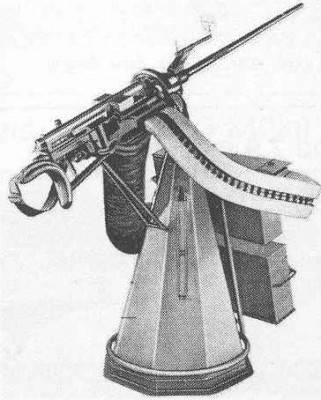
If there were no particular difficulties with the use of turret guns for anti-aircraft fire, then the synchronous and wing variants, which were part of the strike weapons of fighters and attack aircraft, could not be used in anti-aircraft installations without serious refinement.
Synchronized and turret 20-mm aircraft guns were converted for ground use on armory factories and large repair shops. The main changes were made to the reloading device and the trigger mechanism. The existing electric trigger systems and pneumatic reloading mechanisms were replaced by mechanical parts that ensure continuous fire when mounted on single-barreled, twin and triple anti-aircraft guns.
The most common anti-aircraft gun using 20 mm MG.151/20 guns was the horizontally built mount on a pedestal support, known as the 2,0 cm Flakdriling MG 151/20. Mass production of this installation began in the spring of 1944, and it structurally and externally had much in common with the ZPU, which used 15 mm MG.151/15 machine guns.
Three shell boxes were attached to the swivel pedestal support below the guns. The front box held a tape with 400 shells, two side boxes - 250 each. This feature of storing ammunition was associated with the inconvenience of equipping the front box in comparison with the side ones. The barrels of some of the anti-aircraft installations had flame arresters, which reduced the muzzle flame that blinded the shooter. The weight of the anti-aircraft gun with ammunition exceeded 200 kg.
Aiming the built-in installation at the target was not mechanized. Significant physical effort was required from the shooter to aim the installation at the target. Although the designers tried to balance the guns in the horizontal plane, the angular pickup speed was small, and the inertia during rotation on the pedestal was very significant. The sights of the built-in 20 mm 2,0 cm Flakdriling MG 151/20 mount were very simple and, in terms of their capabilities, were significantly inferior to the 20 mm 2,0 cm Flak 28 anti-aircraft guns; 2,0 cm FlaK 30; 2,0 cm Flak 38 and 2,0 cm Flakvierling 38.
Nevertheless, an anti-aircraft installation with a total rate of fire of more than 2 rds / min for aircraft flying at low altitude posed a serious danger. A significant advantage of the belt-fed 000 cm Flakdriling MG 2,0/151 mounts compared to the 20 cm Flakvierling 20 quad 2,0 mm MZA mounts was the ability to fire in long bursts of longer duration. This required only one gunner, while servicing a quadruple 38-mm magazine-loading anti-aircraft gun required a calculation of eight people. In the presence of armor-piercing tracer shells in the ammunition load, the 20 cm Flakdriling MG 2,0/151 gunner corrected the lead angle along the tracks.
It is currently impossible to determine how many anti-aircraft installations were created using MG 151/20 aircraft guns, but judging by the numerous photographs where they are captured, these anti-aircraft guns were fired quite a lot.
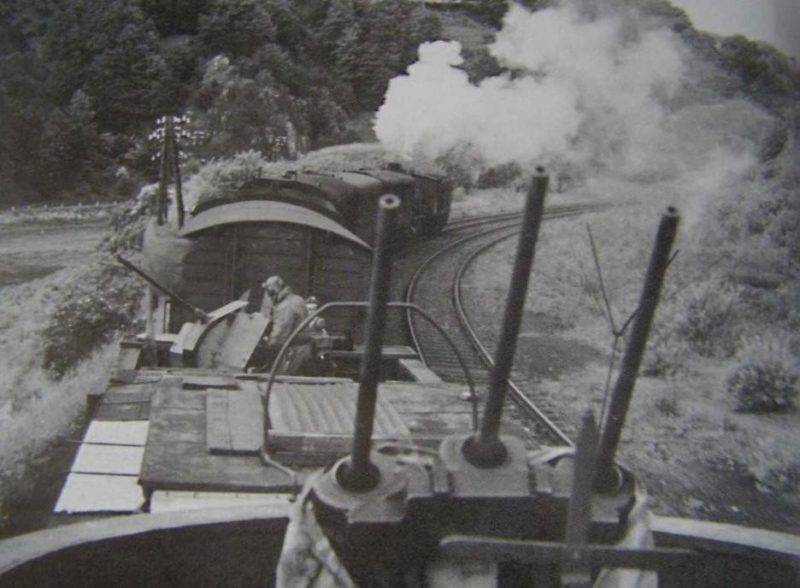
Three-barreled installations 2,0 cm Flakdriling MG 151/20 were often mounted both permanently for object air defense, and on towed four-axle trailers, various armor, auto and railway equipment, including armored air defense trains.
Half-track armored personnel carriers of the SdKfz 2,0 family were most often used as an armored chassis to accommodate the 151 cm Flakdriling MG 20/251. Initially, anti-aircraft guns were installed on armored personnel carriers with an open rear platform. With a good view, the shooter was protected from bullets and shrapnel only by an armored shield in front.
Later, the Sd.Kfz.251/21 anti-aircraft self-propelled gun, covered in a circle with bulletproof armor 8–14,5 mm thick, went into production. The gun mount itself was placed in an armored box.
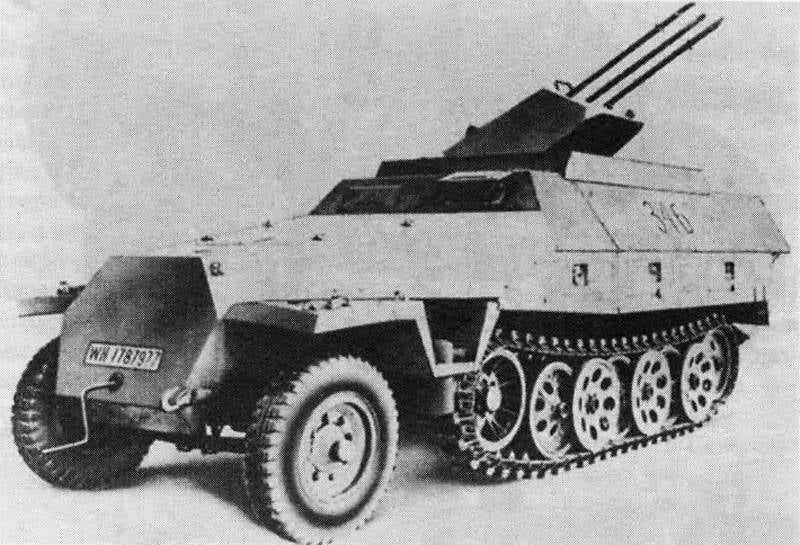
It was possible to fire not only at air, but also at ground targets. According to American combat reports, the Sd.Kfz.251/21 ZSU on the Western Front was very often used in support of ground forces. In terms of the combination of characteristics, the Sd.Kfz.251 / 21 self-propelled anti-aircraft guns can be considered one of the most successful German models on a half-tracked chassis.
This ZSU, with a relatively low cost and good indicators of mobility and maneuverability, had high firepower and could successfully operate against aircraft, hit lightly armored targets and manpower. But the Germans did not have time to build many such anti-aircraft self-propelled guns. From October 1944 to February 1945, the German industry managed to produce approximately 150 armored personnel carriers armed with built-in cannon mounts. This successful ZSU appeared too late and did not have a noticeable effect on the course of hostilities.
Talking about German anti-aircraft installations created using aircraft guns, one cannot but mention the 30-mm MK.103 gun, which was one of the most successful types of aircraft weapons created by German designers during World War II.
The MK.103 air gun was designed by Rheinmetall-Borsig AG in 1940. For firing from this gun, a powerful shot measuring 30x184 mm was used. The 30 mm MK.103 cannon weighed 145 kg without ammunition. The mass of a box with a tape for 100 shots is 94 kg. The scheme of functioning of automation is mixed: the extraction of the sleeve, the supply of the next cartridge and the promotion of the tape occurred due to the short rollback of the barrel, and the removal of powder gases was used to cock the bolt and unlock the bore. The MK 103 cannon was fed from a loose metal strip with a length of 70–125 shells. Rate of fire - up to 420 rds / min. Direct shot range - 800 meters.
The design of the weapon is quite simple and reliable. The main disadvantage, according to Soviet experts, was the strong shock loads during the operation of automation and excessive recoil, which limited the use of 30-mm guns as part of the armament of single-engine fighters. According to the complex of combat characteristics, the MK.103 occupied an intermediate position between the 23-mm VYa air gun and the 37-mm NS-37.
Armor-piercing projectile weighing 455 g, with an initial speed of 760 m / s at a distance of 300 m could penetrate 32-mm armor. Subsequently, an armor-piercing tracer sub-caliber projectile was created for a 30-mm aircraft gun, which at a distance of 300 m, when hit at an angle of 60º, could penetrate 50-mm armor.
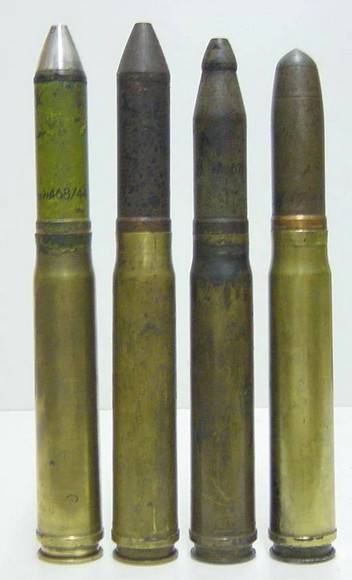
30-mm projectiles for aircraft gun MK.103
The most effective when firing at air targets was a 330 g high-explosive projectile 3 cm M.-Gesch. o. Zerl., containing 80 g of TNT, and 320 g of high-explosive tracer 3 cm M.-Gesch. L'spur o. Zerl., equipped with 71 g of phlegmatized RDX mixed with aluminum powder. For comparison: the Soviet 37-mm fragmentation tracer UOR-167 weighing 0,732 g, which was part of the 61-K anti-aircraft gun ammunition, contained 37 g of TNT. High-explosive 30-mm projectiles hit any part of the Il-2 attack aircraft resulting in critical damage.
Production of the MK.103 was carried out from mid-1942 to February 1945, and a significant number of unclaimed 30-mm guns accumulated in the warehouses of the Luftwaffe, which became the reason for their use in anti-aircraft installations.
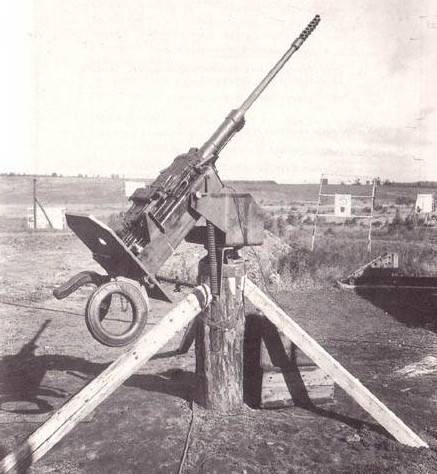
At the first stage, as in the case of other aircraft machine guns and cannons, the MK.103 was mounted on handicraft anti-aircraft gun carriages. In the summer of 1943, the first 30-mm guns were mounted on primitive and rather crudely made turrets. Thus, the ground personnel of the Luftwaffe tried to strengthen the air defense of the airfields.
In the summer of 1943, Waffenfabrik Mauser AG created a 20 cm Flak 38/3,0 mount by superimposing an aircraft gun on a 103-mm Flak 38 anti-aircraft gun machine. Although this anti-aircraft gun was in many ways a forced wartime improvisation, on the whole it was very successful.
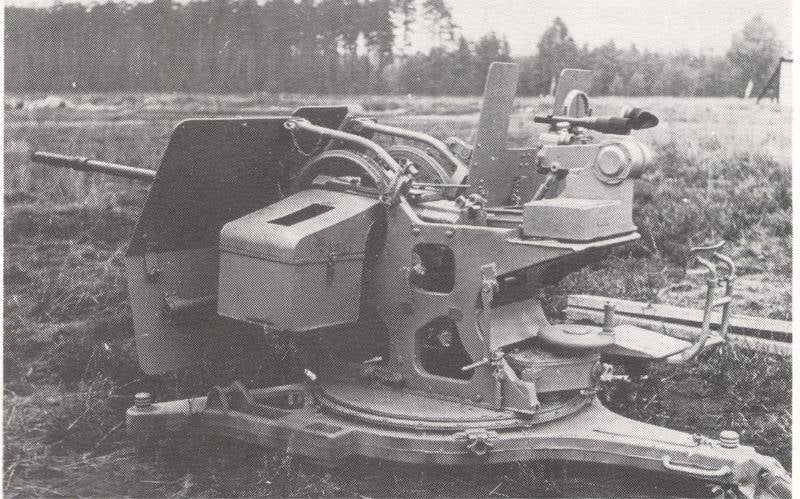
30 mm anti-aircraft gun 3,0 cm Flak 103/38
Compared to the 20 mm 2,0 cm Flak 38 mount, the new 30 mm Flak 103/38 anti-aircraft gun is about 30% heavier. The mass of 3,0 cm Flak 103/38 in the transport position was 879 kg, after separation of the wheels - 619 kg. According to expert estimates, the effectiveness of the 30-mm anti-aircraft gun has increased by about 1,5 times.
The effective fire range has increased by 20%, but due to the use of belt feed and a box for 40 shells, the combat rate of fire has increased significantly. At the same time, the destructive effect of a 30-mm projectile exceeded a 20-mm projectile by about two times. Thus, to shoot down an armored attack aircraft or a twin-engine dive bomber, as a rule, it took no more than two or three fragmentation tracer or one high-explosive projectile hit. Since the heavier 30-mm projectile lost its energy more slowly, the maximum slant range against air targets was 5 m, and the altitude reach was 700 m.
Single-barreled anti-aircraft guns based on the MK.103 on a standard carriage of a 20 mm 2,0 cm Flak 38 anti-aircraft gun were used in a towed version and were placed on various self-propelled chassis. Very often, 3,0 cm Flak 103/38 anti-aircraft guns were installed on Austrian Steyr 2000A trucks.
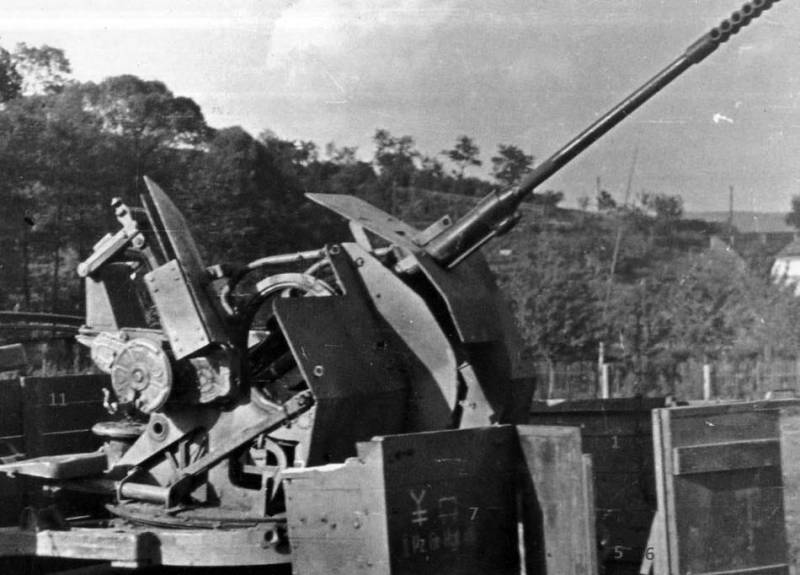
30 mm anti-aircraft gun 3,0 cm Flak 103/38 in the back of a Steyr 2000A truck
In order to reduce the cost of production, the cabin was made open. To protect against the weather, an awning could be installed over the driver's workplace and body on removable arcs. In addition to the armored shield, the calculation of the improvised anti-aircraft self-propelled gun was not covered by anything from bullets and shrapnel and was vulnerable to them.
30-mm aircraft guns were also armed with anti-aircraft self-propelled guns, produced on the basis of light tanks Czech-made Pz. Kpfw. 38(t). Externally, this machine was almost indistinguishable from the Flakpanzer 38(t) ZSU with a 20mm automatic cannon.
At the end of 1944, similar to the 20 cm Flakvierling 2,0 quad anti-aircraft gun, the 38 cm Flakvierling 3,0/103 was created. Externally, the 38 mm quad mount differed from the 30 mm in longer and thicker barrels, equipped with a multi-chamber muzzle brake.
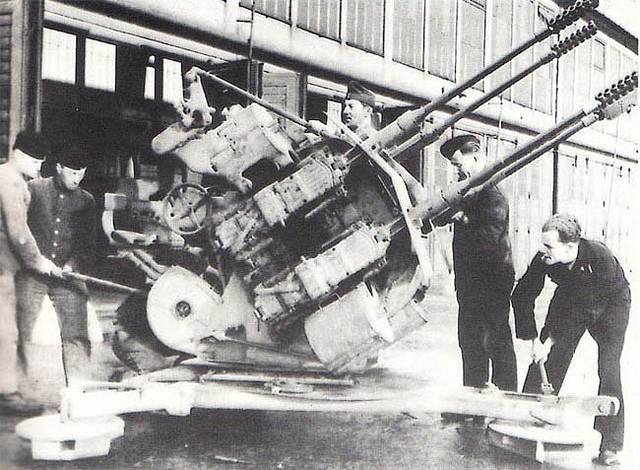
30 4mm anti-aircraft gun 3,0 cm Flakvierling 103 / 38
Compared to the quadruple mount 2,0 cm Flakvierling 38, the weight of the 3,0 cm Flakvierling 103/38 in combat position has increased by about 300 kg. But the increase in weight was more than offset by increased combat performance. The total rate of fire was more than 1 rds / min. When using armor-piercing shells, 600 kg of hot metal per second flew towards the enemy.
The Wehrmacht command had high hopes for 30-mm quad mounts and planned to arm Flakpanzer IV Wirbelwind armored self-propelled anti-aircraft guns with them.
In terms of firepower, the 30-mm Flakvierling 3,0-mm anti-aircraft gun had no analogues at that time and could pose a serious danger to both combat aircraft operating at low altitudes and tanks.
In total, about 500 anti-aircraft installations chambered for 30x184 mm were assembled at German and Czech enterprises. Germany's limited resources, the incessant bombing of defense plants and the successes of the Red Army did not allow the release of a sufficient number of 30-mm anti-aircraft guns that could have a significant impact on the course of hostilities.
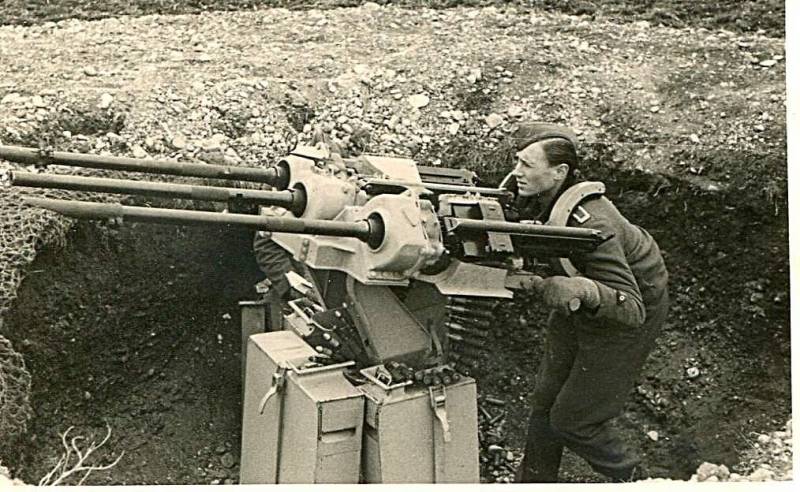
Information